FPV (First-Person View) racing drones are the Ferraris of the sky—built for high speed, sharp turns, and adrenaline-pumping action. In 2026, the U.S. drone racing scene is bigger than ever, with options for beginners, pros, and freestyle pilots.
Whether you’re competing in a MultiGP league, practicing in your backyard, or zipping through a custom track, the right FPV drone makes all the difference.
We’ve rounded up the top 7 FPV racing drones available in the USA for 2026, based on speed, durability, camera quality, battery life, and price.
Top 7 FPV Racing Drones in USA – Top Drones Reviewed

1. DJI FPV Combo – Best All-in-One Ready-to-Fly Option
Quick Features

The DJI FPV Combo is a great entry into FPV racing for USA pilots who want speed with stability. It combines sleek 4K video capture with low-latency OcuSync transmission and intuitive flight modes, making it ideal for those upgrading from camera drones.
Pros
- Smooth beginner transition into FPV
- High-quality video + long range
- DJI service/support widely available in USA
- Easy to control with DJI Goggles 3
- Smooth 4K footage with RockSteady stabilization
- Long battery life for an FPV drone
- Durable ducted propeller design
Cons
- Higher cost than basic racers
- Bigger, heavier—less agile indoors
2. DJI Avata 2 – Best All-Round FPV Racing Drone
Quick Features

The DJI Avata 2, one of the most trending FPV drones on Amazon USA, balances ease-of-use and immersive speed. Its stabilized 4K camera paired with prop protections makes it perfect for cinematic racing without heavy gear.
Pros
- Ultra-portable & lightweight
- Excellent video quality and stabilization
- Intuitive GPS-assisted modes for newcomers
Cons
- Less responsive in true acro flying than open-frame drones
- Add-on motion controller exclusive in some kits
3. iFlight Nazgul Evoque F5 V2 O4 6S HD
Quick Features

This top-tier racer pairs blazing speed with cinematic quality through the O4 HD digital FPV system. It’s making waves on Amazon and among professional U.S. racers with its ability to record 4K at 120fps and fly over 100 mph.
Pros
- Stunning HD video and real-time clarity
- Blazing fast — built for racing and cinema
- Durable carbon DeadCat frame
Cons
- High price (roughly $1,700 BNF)
- Short flight time (7.5 minutes)
“See our HD vs. analog FPV flight comparison to pick best video mode.”
4. GEPRC Mark5 DC HD O3 FPV
Quick Features

The GEPRC Mark5 delivers serious value with HD video, speed, and portability—widely available on Amazon U.S. Its O3 digital system delivers crisp livestreams with minimal lag, perfect for serious racers who want smart FPV.
Pros
- Real-time HD streaming
- Rugged yet agile carbon build
- Price-effective compared to bigger HD racers
Cons
- Requires DJI goggles for HD mode
- Not top-of-line speed, but balanced
5. EMAX Tinyhawk 3 Freestyle PLUS+ (RTF Kit)
Quick Features

An Amazon favorite for beginners, the Tinyhawk 3 Freestyle PLUS+ combines a durable carbon mini racer with goggles and controller. It’s perfect for indoor flight training and learning acro controls.
Pros
- Affordable RTF kit for starting FPV racing
- Crash-resistant design for tough beginners
- Simple, fun, and versatile for indoors
Cons
- Low top speed — unsuited for outdoor racing
- Short flight duration (upgrade batteries recommended)
“Begin with our indoor FPV training tips for safer practice.”
6. BetaFPV Meteor75 Pro 1S Brushless
Quick Features

This small 1S brushless FPV freestyler delivers killer indoor agility. With Amazon availability and a solid reputation in U.S. mini FPV circles, it’s a strong contender for micro racing.
Pros
- Super-safe micro frame perfect for confined spaces
- Lightweight and beginner-friendly
- Brushless power at micro-level
Cons
- Not for outdoor or high-speed racing
- 1S limits flight duration and power
7. DJI Neo – Best fpv Racing Drone For Professionals
Quick Features

A sleek newcomer on Amazon, the DJI Neo bridges beginner FPV and selfie drone experiences. Lightweight and voice-controlled, you can even integrate it with DJI goggles and controllers for full FPV flight.
Pros
- Lower entry barrier to FPV with voice control
- Excellent video on a registration-exempt frame
- DJI ecosystem integration
Cons
- Challenging for traditional FPV racing tracks
- Still limited spare parts availability
“See our [FAA drone registration guide] if you exceed 250g.”
Quick View:
| Drone | Best For | Flight Time | Video Type | Check Price |
|---|---|---|---|---|
| DJI FPV Combo | Beginner → Intermediate | 20 minutes (combined battery) | 4K/60 stabilized | View on Amazon |
| DJI Avata 2 | Portable cinematic FPV | 23 minutes | 4K/60 stabilized | View on Amazon |
Nazgul Evoque F5 | Racing / Pro Pilots | 7-8 minutes | 4K HD (O4/O3) | View on Amazon |
| GEPRC Mark5 DC | Balanced performance & value | 6-8 minutes | DJI O3 / HD streaming | View on Amazon |
| EMAX Tinyhawk 3 Freestyle PLUS+ | Indoor / Training / Beginner RTF | 4-6 minutes | Analog / Basic HD | View on Amazon |
| BetaFPV Meteor75 Pro | Micro indoor freestyle | 3-6 minutes | Analog | View on Amazon |
| DJI Neo | Beginners & selfie-style FPV | 12-15 minutes | 4K AI-tracked video | View on Amazon |
What is the average FPV drone speed?
FPV drones are designed for high-speed and agile flight, making them capable of achieving impressive speeds. An FPV racing drone can fly from 60 to 100 miles per hour (97 to 161 kilometers per hour) or even faster in some cases. These drones are optimized for racing and agility, so their speed capabilities are a key feature.
Remember, the speed of an FPV drone can be adjusted and controlled by the pilot using the throttle and various flight modes. Experienced FPV pilots often push their drones to their speed limits in racing or freestyle flying, while beginners may start at lower speeds until they gain confidence and skill.
Why are FPV drones so fast?
FPV drones are fast due to their lightweight, aerodynamic design, high-power brushless motors, specialized flight controllers, and high-discharge rate batteries. They prioritize speed over payload capacity, allowing for rapid acceleration and top speeds.
Skilled pilots, low-latency video transmission, and a competitive racing focus further increase their speed. This combination of factors makes FPV drones some of the fastest, perfect for racing and precision flying.
Are FPV drones good for racing?
FPV drones are best for racing. They are purpose-built for speed, agility, and precise control. FPV pilots wear goggles that provide a real-time video feed from the drone, allowing for immersive and competitive racing experiences.
These highly maneuverable drones have low latency video transmission, making them ideal for navigating racecourses with tight turns and obstacles. Their speed and responsiveness are key features that make them the preferred choice for racing enthusiasts.
Buying Guide – Choosing the Right FPV Racing Drone
Buying an FPV racing drone requires careful consideration of key features that significantly impact your racing performance. Take a look at the following essential features before deciding to buy an FPV racing drone.
1. Skill Level
Beginner: Choose DJI FPV Combo, EMAX Tinyhawk, or DJI Neo for easy learning.
Intermediate/Advanced: Consider iFlight, GEPRC, or EMAX for aggressive frame rates and agility.
Cinewhoop/Indoor: BetaFPV Meteor75 offers ducted safety and smooth cinematic motion.
2. Video Transmission
Analog: Best for zero-latency, razor-sharp flying.
HD (O3/O4): Ideal for cinematic racers or live streaming competitions.
3. Flight Time & Power
Expect 4–8 minutes per 4S–6S LiPo. Carry spares and choose frames with modular ESCs and batteries.
4. Durability & Parts Availability
Stick to brands like DJI, iFlight, EMAX, and BetaFPV with strong U.S. distribution and spares.
5. FAA Regulations
Think about weight: Sub-250g (DJI Neo/Avata 2) may exempt you from registration and some rules. But for racing, most models do require FAA registration and LOS adherence.
Electronic Speed Controllers (ESCs)

ESCs govern the motor speed of the FPV drone. Low-latency, high-refresh-rate ESCs ensure rapid acceleration and precise braking.
Pick ESCs that support rapid throttle changes and come with active braking features.
Video Transmitter (VTX)
VTX broadcasts real-time video feed to your FPV goggles. Low-latency, high-transmission-power VTX units deliver a clear view during high-speed races.
Prioritize VTX units with adjustable power settings to match your racing environment.
FPV Camera
The FPV camera captures your view. Low-latency, high-resolution cameras with a wide field of view (FOV) are vital for spotting obstacles and competitors.
Look for cameras that support various FOV options and have low latency for quick response.
Receiver (RX)
The RX receives control signals. Reliable, long-range, low-latency receivers ensure seamless control even in challenging racing conditions.
Look for receivers compatible with your transmitter and consider redundancy for signal reliability.
Speed and Range
Racing drones must be swift and have adequate control range. Top speed and range contribute to winning races and exploring more challenging courses.
Balance between speed and control range based on your racing style and location.
The speed of an FPV racing drone can range from 30 to over 100 miles per hour (48 to 160 kilometers per hour), depending on the drone’s configuration and purpose.
The range of an FPV racing drone can vary from 300 meters (984 feet) to 2 kilometers (1.24 miles) or more, depending on the equipment and setup.
Battery
Batteries affect flight time and power output. High-capacity LiPo batteries with a high discharge rate provide the punch for racing.
A good choice for racing drones is a high-discharge Lithium Polymer (LiPo) battery with a capacity ranging from 1000mAh to 1500mAh and a high C-rating (30C or higher).
Match battery capacity and voltage to your motors and propellers for optimal performance. Have spare batteries for extended racing sessions.
Frequently Asked Questions (FAQ’S)
- Q: Are FPV racing drones legal to fly in the USA?
Yes, but you must register drones over 250g, stay within visual line of sight, and follow FAA rules unless you have a waiver—they can race in designated zones like MultiGP events. - Q: What’s the fastest FPV racing drone?
The iFlight Nazgul Evoque topping 100 mph for USA-ready speed and filming features. - Q: Should I use analog or HD FPV systems?
Analog offers near-zero latency for racing. HD (O3/O4) gives stunning video but slight latency—great if you prioritize footage over split-second response. - Q: How long do FPV drone batteries last?
At high throttle racing, expect only 4–7 minutes. Slower flights and lighter builds may stretch to 10–15 minutes.
Final Thoughts
Best overall starter: DJI FPV Combo — Safe, reliable, and well-supported across the USA.
Best portable FPV experience: DJI Avata 2 — Compact and cinematic.
Best pure performance: iFlight Nazgul Evoque F5 — Unmatched speed and HD clarity.
Best indoor/freestyle: BetaFPV Meteor75 — Safe and nimble.
Best for durability: EMAX Tinyhawk 3 — Affordable, tough, and ready to fly.
Best for U.S. accessibility: GEPRC Mark5 HD and DJI Neo — Great parts availability and value.
Make sure to check local FPV racing clubs and courses for hands-on testing and immersive experience.
Jose E. Johnson is a true tech prodigy whose lifelong passion for technology and gadgets has blossomed into remarkable drone expertise. From the moment he laid eyes on his first electronic toy as a child, Jose was captivated by the limitless possibilities of innovation. As he grew, so did his fascination with cutting-edge tech, leading him to become a bona fide drone expert. With an insatiable thirst for knowledge, Jose delved deep into the intricacies of drone technology, amassing a wealth of technical knowledge and hands-on experience. Now, he shares his wisdom through insightful drone reviews and invaluable tips for fellow enthusiasts, making him a trusted source in the drone community.

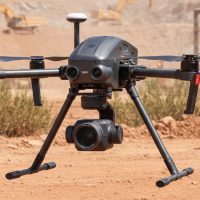
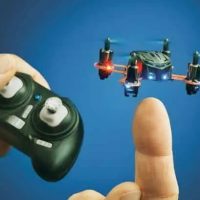
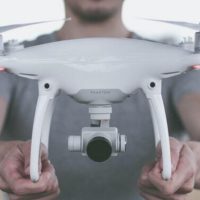
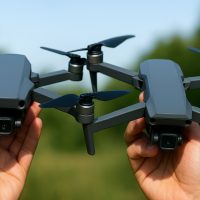
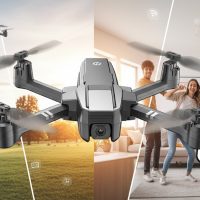
![Top Waterproof Drones for Fishing and Boating Adventures [2026 Guide] Waterproof Drones for Fishing and Boating Adventures](https://theeazyshop.com/wp-content/uploads/2025/11/Waterproof-Drones-for-Fishing-and-Boating-200x200.jpg)
Leave a Reply